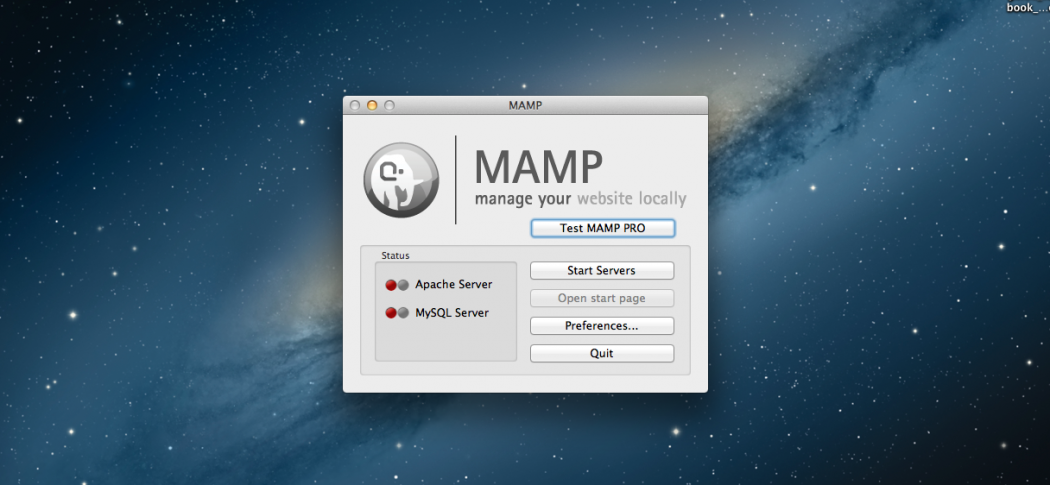
Remember you can check which port your MySQL is running on by opening MAMP and clicking the ports link on the left navigation panel.
#Mamp not connecting to mysql server pro
MAMP PRO could not create remote folder make sure that the ftp account has rights to read and write on remote server. Missing remote server MySQL information Enter all the fields on the remote tab.
#Mamp not connecting to mysql server password
At this point you can now test your connection to MySQL with telnet or a node.js script. Could not connect to the remote server with the user name user name or password wrong or user does not exist on remote server. To turn on the TCP/IP connection, the skip-networking parameter in the mysql configuration file should be commented out. b) Use this set of commands: ps aux grep mysql lsof -i killall -9 mysqld. Since the default MAMP installation does not turn on TCP/IP networking, tools that use JDBC, i.e., the MySQL Connector/J JDBC driver, would not be able to connect without configuration changes. In the center of the page you will see a checkbox that says,Ĭheck this box and then restart your MAMP. Possible solutions from this thread: a) Launch MAMP, go to Preferences and set SQL Port to 3306. If you open MAMP and click MySQL in the left navigation panel it will pull up the MySQL options page. After this I tried several methods to solve the socket issue after I found the solution from. I suspected the problem had to do with the network and not MySQL or Node.js. mysqldump: Got error: 2002: Can't connect to local MySQL server through socket '/tmp/mysql.sock' (2) when trying to connect. I believe connection refused is a tcp/ip error message, rather than something from MySQL which suggests that it is either not running or is running on another port or with sockets.Ĭould you try telnet'ing to port 3308? To see if the server is running on that port? telnet localhost 3308Ĭan you also try: mysql -hlocalhost -uroot -pxxxįor anyone else having this problem and is running mamp. If this has worked before, my first guess would be that you've already got a copy of your node.js script running in the background which is holding the connection. to YOURNEWUSER identified by 'YOURPASSWORD' If you’re using a higher.

Then enter the following commands, make sure to change the default data. To do this, access your mysql via mysql -u -root -p.

So the solution was to add: port: '/var/run/mysqld/mysqld.sock' To grant a remote access to MySQL server, you need to create a database user with a host wildcard. I know this question has been answered, but for me the problem was that the mysql server listens on a Unix socket not on a tcp socket.


 0 kommentar(er)
0 kommentar(er)
